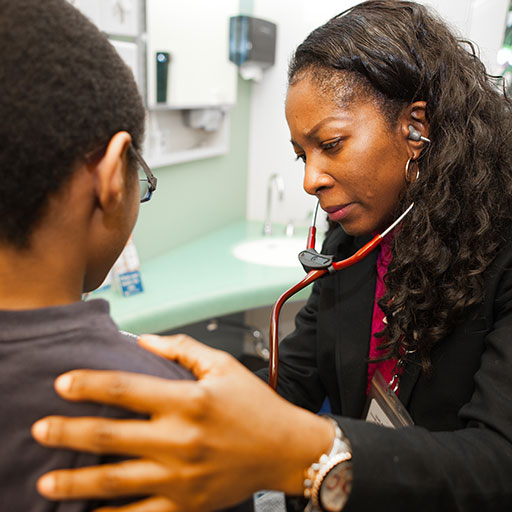As a Mayo Clinic resident, you have exposure to a diverse patient pool of over 4 million people. The patient population at Mayo Clinic includes not only local residents, but also patients from across the country and around the world. A wide spectrum of pathology is seen ranging from common skin cancers to extremely rare forms of cutaneous lymphoma.
Valleywise Health Medical Center, located in the center of Phoenix, serves the indigent and underserved of Arizona with a diverse range of skin types and ages. As the regional burn center, Valleywise Health Medical Center also cares for patients requiring complicated day-to-day nursing skin care.
Phoenix Children's Hospital, also located in the center of Phoenix, is a primary pediatric hospital of the southwestern United States. The majority of patients, of all skin types and socio-economic backgrounds, come from Arizona and surrounding states.
The residents' high degree of direct responsibility for patient care is one of the greatest strengths of the Dermatology Residency at Mayo Clinic. At the Mayo Clinic site, residents treat patients in a continuity clinic setting. Patients are scheduled directly on resident calendars, and the patients identify the residents as their providers of dermatologic care. Faculty members supervise the residents and encourage them to take an increasing amount of responsibility for decision-making in the management of patients.
Residents continue to follow the same patients throughout the residency training, allowing close relationships and prolonged care. As any patient may be assigned, residents learn longitudinally to treat both common conditions, such as skin cancers, dermatitis and eczema, as well as complex disorders, such as cutaneous lymphoma, bullous disease, genodermatoses and neutrophilic dermatoses.
By the completion of residency, trainees have gained a tremendous amount of experience in directly managing the care of both common and complex dermatologic problems, and are very well-prepared for future practice.
Residents follow a more traditional format at Maricopa Medical Center and Phoenix Children's Hospital. At these off-site locations, patients are assigned to attendings' schedules, which are staffed by residents.
With the small, intimate size of the program, all faculty members have frequent interactions with residents. All faculty members work with residents in continuity clinics on a rotating basis. In addition, all faculty members treat patients under their own schedules, independent of residents.
As a unique opportunity, residents are sometimes scheduled for "mentor clinic," where they observe and learn in faculty clinics, without being involved in notes or orders. The numerous conferences and teaching sessions of the program also offer opportunities for continual interaction, discussion and exchange of ideas with the faculty.
Starting the first year of residency, all residents have their own excision clinic at the Mayo Clinic site, where they are the primary surgeons in outpatient excisions. Residents are further encouraged to act as primary surgeons in certain Mohs cases throughout their training, from the initial planning of the procedure to the final closure.
Throughout the procedures, the faculty members provide guidance and supervision. Through these means, residents gain progressive skills and confidence in simple and complex wound closures. Residents also perform procedures at Phoenix Children's Hospital (laser, excisions) and Valleywise Health Medical Center (excisions).
With a population of over 4 million people, Phoenix is one of the fastest-growing metropolitan areas in the country. Travel across the city is quick, as traffic is generally light, allowing easy access to nightlife, local attractions and sporting events.
Extensive hiking trails in Scottsdale and Phoenix are located within large nature preserves throughout the deserts and mountains of the community. Many of these trails are just a few minutes away from Mayo Clinic and offer a beautiful and easily accessible opportunity for hiking, running, biking, and exploring.
With the low cost of living, residents have a wide variety of living choices. While Phoenix is hot in the summer, roughly two-thirds of the year is quite temperate, making the area a popular wintering destination for outdoor activities and an overall great place to live.






